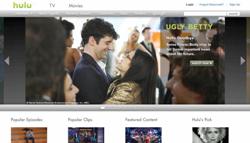Is It Time for a Digital Upfront?

Upfront Central: Complete Coverage from B&C
The usual suspects in the television upfronts—broadcast, cable and syndication—aren’t the only ones with an eye on the annual $60 billion TV ad pot. Digital operators, from Google’s YouTube to Hulu to Microsoft, are also in the hunt as digital buying is increasingly moving in tandem with the main event.
“One thing that’s happening now, you’ve got TV buyers becoming video buyers,” says MediaLink President Wenda Harris Millard. Indeed, many agency executives whose jobs were once about TV investment now oversee entire units. They include Donna Speciale, president of investment at MediaVest, and Elizabeth Herbst-Brady, president of Magna.
The arrival of TV Everywhere and the availability of premium shows online (some complete with the same ad load as TV, as The CW is planning) requires coordination between agency buying units. Some feel that an umbrella digital upfront could help iron out some of the wrinkles in the process, but not everyone’s convinced.
“It’s a good idea in theory. It would alleviate a lot of challenges we face in digital media,” observes Donnie Williams, VP of digital strategy for Horizon Media. “As a group, we go back and forth. For specific clients there are some safe bets out there, and we’re willing to make a longer-term investment over the next few quarters.”
However, Williams worries that digital properties could get cheaper, not more expensive, making long-term commitments— the raison d’être of upfronts—too risky.
Microsoft VP of Ad Sales Keith Lorizio, speaking at B&C’s Upfront Central summit on April 6, said he thinks an industry-wide digital upfront could be a good idea: “It would help both of us from the digital and TV fronts if we coordinate something in the same time frame. We have had [smaller digital presentations] in the last couple of years. We’ve given first-look opportunities at new shows we were producing, and we’ve integrated with our top properties in order to buy. I’m passionate about that and that’s what we need to get to, and I think that would help both parties.”
Harris Millard once spearheaded a digital upfront presentation in one of her previous roles as chief sales officer at Yahoo. Yet she is unconvinced of the need for a coordinated effort. “The digital space has unlimited inventory; they don’t really have a scarcity issue,” she says. She acknowledges, though, that there is still a desire by movie studios to advertise online on Thursdays and Fridays, and that there are only so many big destination home pages.
Some premium online video sites want to replicate the TV ad load of some 20 ads per show to gain a C3 rating, yet many agencies see that as a short-sighted use of a newer platform.
But not everyone is moving in that direction. In terms of the premium online video market, Hulu is the 800-pound gorilla; the service is relatively light on ads but has more planned. One rumor circulating in the buying world is that Hulu is planning to run two ads, rather than one, per pod online to alleviate scarcity of inventory.
The company, owned by NBC Universal, News Corp., Disney and Providence Equity Partners, is committed to keeping shows as clutter-free as possible. Interestingly given its ownership, the company— the second-biggest online video destination behind YouTube—is said to be preparing research to illustrate how its service stacks up against everyone else, including both broadcast and cable outlets. A company spokesman had no comment.
Microsoft’s Lorizio adds, “Are we competing for TV dollars? Yes.” He says he recently met with the chief marketing officer of a Fortune Top 10 company and was told, “We’re going to have a digital revolution occur. And we’ll know it’s successful when the folks come in and start talking about the digital plans fi rst, and not the 30-second spots and where they’re going to place them.”
Broadcasting & Cable Newsletter
The smarter way to stay on top of broadcasting and cable industry. Sign up below










